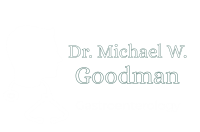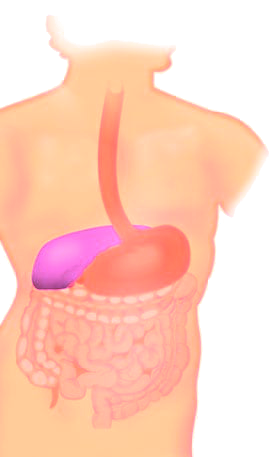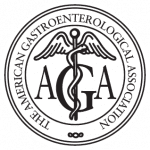Upper endoscopy (also known as an upper GI endoscopy, esophagogastro-duodenoscopy [EGD], or panendoscopy) is a procedure that enables your physician to examine the lining of the upper part of your gastrointestinal tract, i.e., the esophagus (swallowing tube), stomach, and duodenum (first portion of the small intestine) using a thin flexible tube with its own lens and light source.
Our office has a state of the art endoscopy suite, with high definition scopes and monitors. Unless otherwise necessary, your endoscopy will be performed in our Endoscopy Suite.
Upper endoscopy is usually performed to evaluate symptoms of persistent upper abdominal pain, nausea, vomiting or difficulty swallowing. It is also the best test for finding the cause of bleeding from the upper gastrointestinal tract.
Upper endoscopy is more accurate than x-ray films for detecting inflammation, ulcers or tumors of the esophagus, stomach and duodenum. Upper endoscopy can detect early cancer and can distinguish between benign and malignant (cancerous) conditions when biopsies (small tissue samples) of suspicious areas are obtained. Biopsies are taken for many reasons and do not necessarily mean that cancer is suspected. A cytology test (introduction of a small brush to collect cells) may also be performed.
Upper endoscopy is also used to treat conditions present in the upper gastrointestinal tract. A variety of instruments can be passed through the endoscope that allow many abnormalities to be treated directly with little or no discomfort, for example, stretching narrowed areas, removing polyps (usually benign growths) or swallowed objects, or treating upper gastrointestinal bleeding. Safe and effective endoscopic control of bleeding has reduced the need for transfusions and surgery in many patients.
For the best (and safest) examination, the stomach must be completely empty. You should have nothing to eat or drink, including water, for approximately 6 hours before the examination.
You may take your usual heart or blood pressure medications with a sip of water the morning of your procedure.
IMPORTANT: Please either bring a list of your current medications, including over the counter medications or the bottles themselves to the facility where you are having your procedure. Also bring a list of your medication allergies with you to the procedure. Make sure the doctor’s office also has this information.
If you are diabetic: Contact your primary physician regarding medications for the day of your procedure.
If you are on blood thinner (such as Coumadin or aspirin): Contact our office on the next business day for special instructions. These drugs may need to be stopped prior to your procedure.
If you have been told to take antibiotics prior to dental visits or diagnostic tests other than for hip /joint replacements: Contact our office on the next business day for special instructions.
Your doctor will review with you why upper endoscopy is being performed, whether any alternative tests are available, and possible complications from the procedure. Your throat will be sprayed with a local anesthetic before the procedure begins and you will be given medication through a vein to help you relax during the procedure. While you are in a comfortable position on your side, the endoscope is passed through the mouth and then in turn through the esophagus, stomach, and duodenum. The endoscope does not interfere with your breathing during the test. Most patients consider the procedure to be only slightly uncomfortable and many patients fall asleep during the procedure.
After the procedure, you will be monitored in the endoscopy area until most of the effects of the medication have worn off. Your throat may be a little sore for a while, and you may feel bloated right after the procedure because of the air introduced into your stomach during the test. You will be able to resume your diet after you leave the procedure area unless you are instructed otherwise.
If you are sedated, you will need to arrange to have a responsible adult drive and accompany you home from the examination because sedatives may affect your judgment and reflexes for the rest of the day. You will not be allowed to take a taxi or bus as transportation home. If you received sedation, you will not be allowed to drive after the procedure even though you may not feel tired.
Endoscopy is generally safe. Complications can occur but are rare when the test is performed by physicians with specialized training and experience in this procedure. Bleeding may occur from a biopsy site or where a polyp was removed. It is usually minimal and rarely requires blood transfusions or surgery. Localized irritation of the vein where the medication was injected may rarely cause a tender lump lasting for several weeks, but this will go away eventually. Applying heat packs or hot moist towels may help relieve discomfort. Other potential risks include a reaction to the sedatives used and complications from heart or lung diseases. Major complications, e.g., perforation (a tear that might require surgery for repair) are very uncommon.
It is important for you to recognize early signs of any possible complication. If you begin to run a fever after the test, begin to have trouble swallowing, or have increasing throat, chest or abdominal pain, let your doctor know about it promptly.
Because education is an important part of comprehensive medical care, you have been provided with this information to prepare you for this procedure. If you have any questions about your need for upper endoscopy, alternative tests, the cost of the procedure, methods of billing, or insurance coverage, do not hesitate to speak to your doctor or doctor’s office staff about it. Most endoscopists are highly trained specialists and welcome your questions regarding their credentials and training. If you have questions that need to be answered, please discuss them with the endoscopy nurse or your physician before the examination begins.




